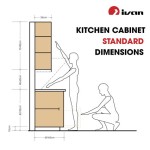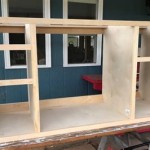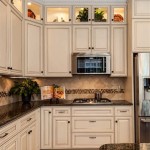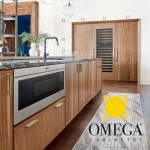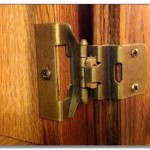Solid Oak Kitchen Cupboard Doors: A Guide to Durability, Aesthetics, and Value
Solid oak kitchen cupboard doors represent a significant investment in the functionality and visual appeal of a kitchen. Choosing the right material for cabinet doors impacts not only the overall aesthetic but also the longevity and maintenance required of the kitchen space. Solid oak, with its inherent strength, unique grain patterns, and versatility, stands out as a leading choice for homeowners and designers seeking a combination of robustness and timeless elegance.
This article will delve into the various aspects of solid oak kitchen cupboard doors, exploring their advantages, different types of oak used, considerations for design and finish, installation guidelines, and maintenance procedures. By understanding these key elements, informed decisions can be made regarding the selection and implementation of solid oak cupboard doors in a kitchen remodeling or renovation project.
Understanding the Advantages of Solid Oak
Solid oak offers a multitude of benefits that contribute to its widespread popularity in kitchen cabinetry. These advantages extend beyond mere aesthetics, encompassing structural integrity, long-term durability, and environmental considerations.
One of the primary advantages of solid oak is its inherent strength. Oak is a hardwood, characterized by its density and resistance to dents, scratches, and other forms of physical damage. This durability makes solid oak cupboard doors well-suited for the high-traffic environment of a kitchen, where they are subject to frequent use and potential impacts. Properly constructed oak doors can withstand the rigors of daily use for many years, making them a cost-effective investment in the long run.
Beyond its strength, oak possesses a distinctive grain pattern that adds visual interest and character to kitchen cabinetry. The grain can range from subtle and straight to bold and swirling, depending on the cut of the wood and the specific type of oak. This natural variation ensures that each set of solid oak cupboard doors is unique, adding a touch of individuality to the kitchen design. The natural beauty of oak can complement a wide range of kitchen styles, from traditional to contemporary.
Furthermore, oak accepts stains and finishes exceptionally well. This versatility allows homeowners to customize the appearance of their cupboard doors to match their specific taste and the overall aesthetic of their kitchen. Oak can be stained in a wide range of colors, from light and airy to dark and dramatic, or it can be left natural with a clear coat to showcase its inherent beauty. The ability to tailor the finish ensures that the cupboard doors seamlessly integrate with the existing décor and other kitchen elements.
From an environmental perspective, oak, when sourced responsibly, is a sustainable material choice. Ensure that the oak used in the construction of the cupboard doors comes from sustainably managed forests, which replant trees and adhere to responsible harvesting practices. Choosing sustainably sourced oak helps to minimize the environmental impact of the kitchen renovation or remodeling project.
Types of Oak: Red Oak vs. White Oak
While both red oak and white oak are commonly used in cabinetry, they possess distinct characteristics that influence their suitability for different applications. Understanding these differences is crucial for selecting the right type of oak for kitchen cupboard doors.
Red oak, as the name suggests, has a reddish tint and a more open grain pattern compared to white oak. This open grain allows red oak to absorb stains readily, resulting in a more pronounced grain appearance. Red oak is generally less expensive than white oak, making it a budget-friendly option for larger kitchen projects. However, the open grain structure of red oak makes it less resistant to moisture compared to white oak.
White oak, on the other hand, features a tighter grain pattern and a lighter color compared to red oak. This tighter grain makes white oak more resistant to moisture and decay, making it a preferred choice for applications where water exposure is a concern, such as around sinks and dishwashers. White oak is also denser and more durable than red oak, providing enhanced resistance to dents and scratches. While white oak is typically more expensive than red oak, its superior durability and moisture resistance often make it a worthwhile investment.
The decision between red oak and white oak depends on the specific priorities of the kitchen renovation or remodeling project. If budget is a primary concern and moisture exposure is minimal, red oak may be a suitable option. However, if durability and moisture resistance are paramount, white oak is the preferred choice.
Another factor to consider is the desired aesthetic. The more pronounced grain pattern of red oak can add visual interest to the cupboard doors, while the tighter grain of white oak offers a more refined and subtle appearance. It is important to carefully evaluate the visual characteristics of both types of oak and choose the one that best complements the overall kitchen design.
Design Considerations, Finishing and Installation Guidelines.
Designing with solid oak cupboard doors involves a series of considerations to ensure that the finished product is both aesthetically pleasing and functionally sound. These considerations extend beyond the selection of the oak type to include door style, hardware choices, and finishing techniques.
The style of the cupboard doors should complement the overall design of the kitchen. Popular styles for solid oak cupboard doors include shaker, raised panel, flat panel, and slab doors. Shaker doors, characterized by their clean lines and recessed center panel, offer a timeless and versatile design that works well in both traditional and contemporary kitchens. Raised panel doors, with their decorative raised center panel, add a touch of formality and elegance. Flat panel doors, with their simple and streamlined design, are well-suited for modern and minimalist kitchens. Slab doors, consisting of a single piece of solid oak, offer a clean and contemporary look.
Hardware choices, such as knobs and pulls, play a significant role in the overall appearance of the cupboard doors. Consider the style and finish of the hardware in relation to the oak and the rest of the kitchen decor. For example, stainless steel hardware can complement the clean lines of a modern kitchen, while antique brass hardware can enhance the warmth and character of a traditional kitchen.
The finishing process is also crucial for achieving the desired aesthetic and protecting the oak from moisture and damage. A variety of finishes can be applied to solid oak cupboard doors, including stains, paints, and clear coats. Staining allows the natural grain of the oak to be showcased, while paint provides a more uniform and opaque finish. Clear coats offer protection without altering the natural color of the oak.
Proper installation of solid oak cupboard doors is essential for ensuring their functionality and longevity. Ensure that the doors are hung plumb and square, with even gaps between the doors and the cabinet frames. Use high-quality hinges and hardware to ensure smooth and reliable operation. If installing the doors yourself, follow the manufacturer's instructions carefully. If not confident in your abilities, consider hiring a professional installer to ensure a flawless installation.
Maintenance and Care of Solid Oak Cupboard Doors
Maintaining solid oak cupboard doors is relatively straightforward, but regular cleaning and preventative measures are necessary to preserve their beauty and extend their lifespan.
Regular cleaning is the most important aspect of maintaining solid oak cupboard doors. Use a soft cloth dampened with warm water and a mild dish soap to remove dirt, grease, and fingerprints. Avoid using abrasive cleaners or scouring pads, as these can scratch or damage the finish. After cleaning, wipe the doors dry with a clean, soft cloth.
To protect the finish of the cupboard doors, avoid placing hot pots or pans directly on the surface. Use trivets or hot pads to prevent heat damage. Also, avoid exposing the doors to excessive moisture, as this can cause warping or discoloration. Promptly wipe up any spills or water splashes.
Depending on the type of finish applied to the cupboard doors, periodic waxing or polishing may be necessary to maintain their luster and protect the finish. Follow the manufacturer's instructions for the specific type of wax or polish being used.
Inspect the hinges and hardware regularly to ensure that they are functioning properly. Tighten any loose screws or replace any damaged hardware. Lubricate the hinges periodically with a small amount of oil or grease to ensure smooth and quiet operation.
Addressing minor scratches or dents can help to preserve the appearance of the cupboard doors. Small scratches can often be buffed out with a scratch repair pen or a touch-up marker. Deeper dents may require professional repair.

Surfaces Darby 11 In W X 15 H Wood Unfinished Oak Kitchen Cabinet Sample Door The Samples Department At Com

Replacement Cupboard Doors Cabinet Kitchen Or Bathroom Pine Wood Woodcraft Artisan
.jpg?strip=all)
Choosing Your Favourite Kitchen Door Styles Solid Wood

Cherry Oak Solid Wood Kitchen Cabinet Doors Natural Wooden Surface Finish Cabinetry From Vietnam Factory China Made In Com

Solid Oak Wood Kitchen Unit Doors And Drawer Fronts Cabinets

Get Started On Your Project Quote Solid Wood Kitchens Kitchen Cabinets Rustic

Solid Oak Wood Kitchen Unit Doors And Drawer Fronts Cabinets

Buy Whole China Us Style Kitchen Cabinet Door With Drawer Solid Wood Frame And Plywood Carcase At Usd 25 Global Sources
.jpg?strip=all)
Choosing Your Favourite Kitchen Door Styles Solid Wood

Kitchen Cabinet Doors With Solid Wood Panels By Allstyle
Related Posts

